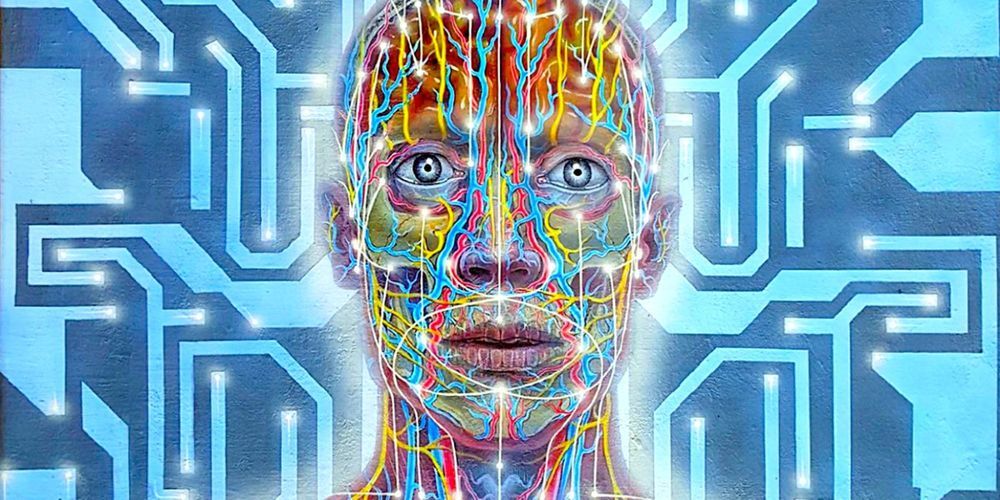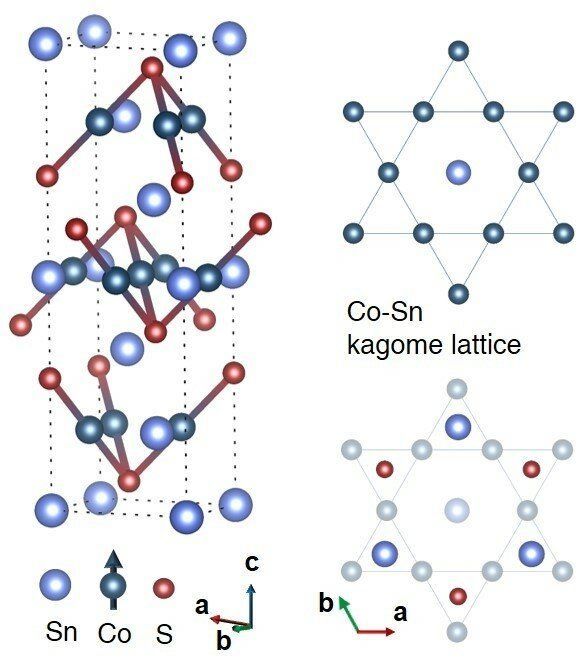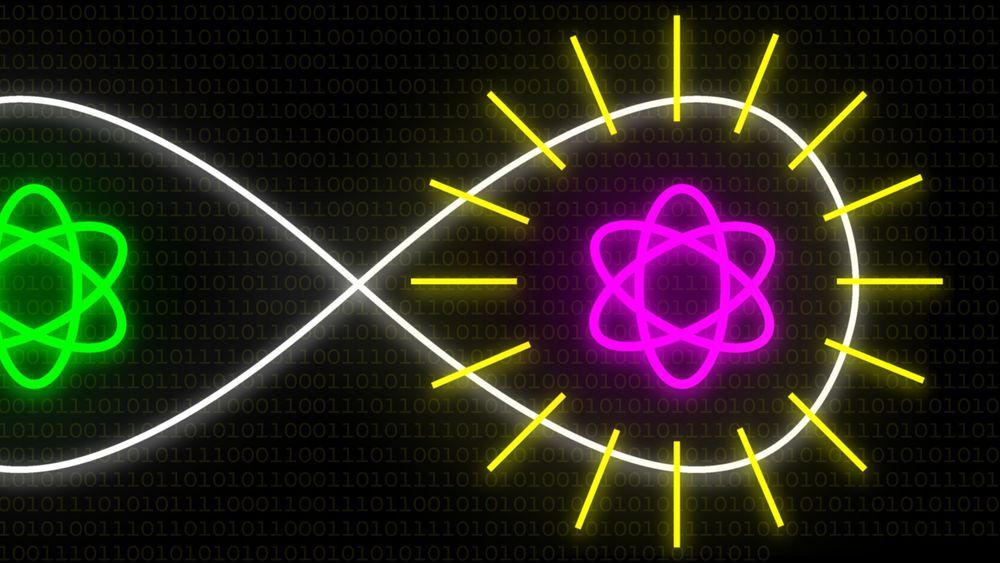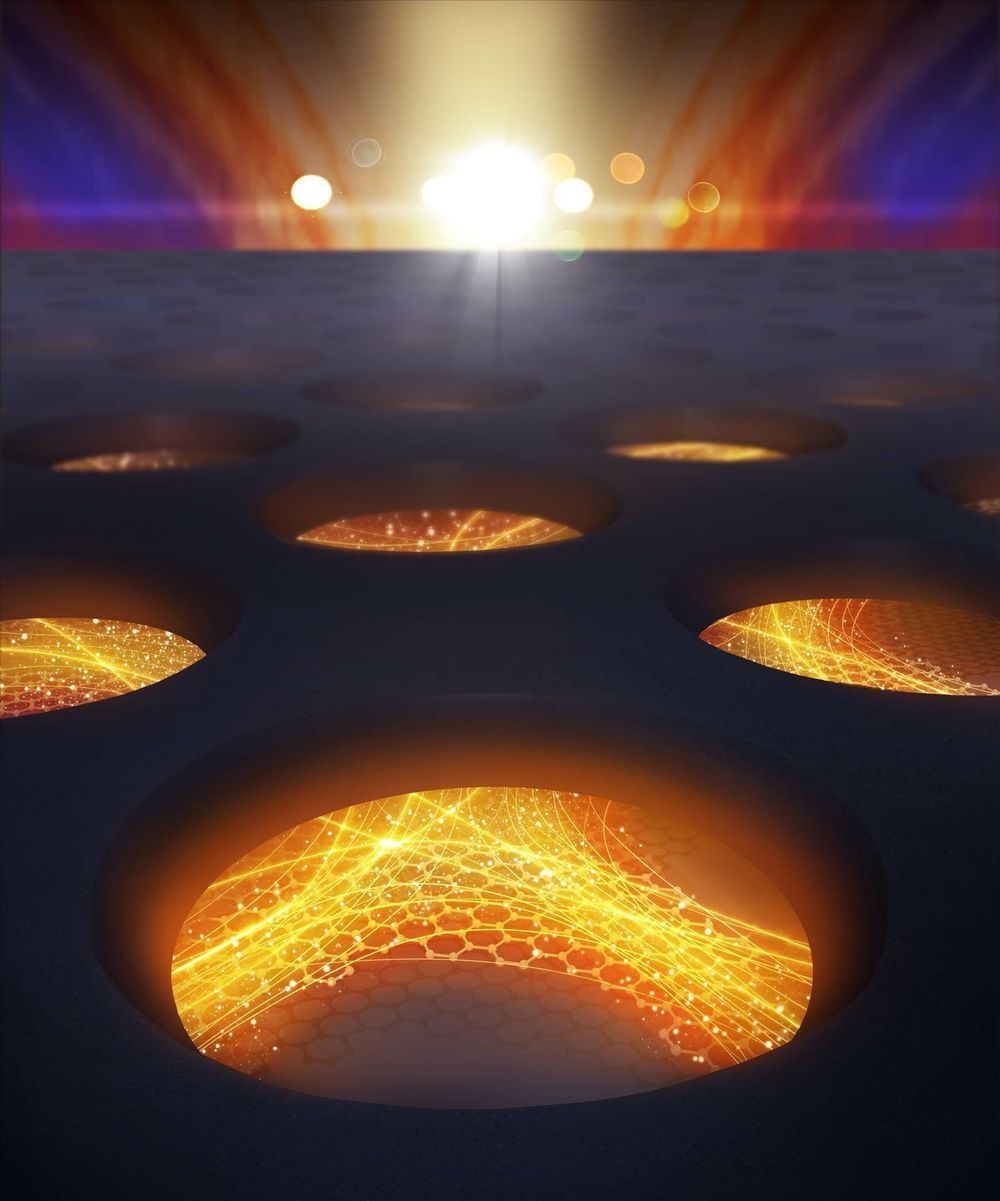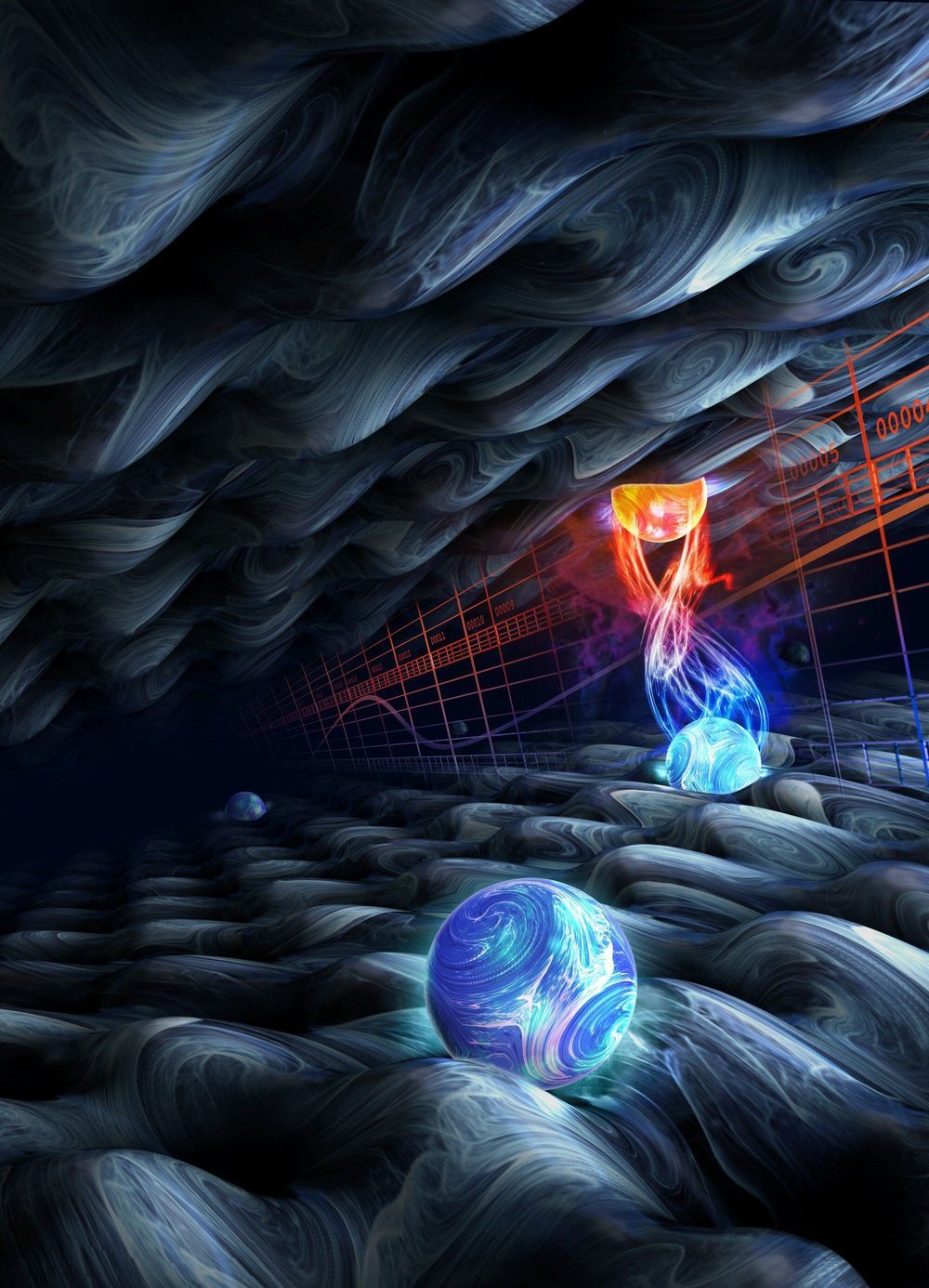Archive for the ‘quantum physics’ category: Page 659
Feb 24, 2019
A quantum magnet with a topological twist
Posted by Genevieve Klien in categories: particle physics, quantum physics
Taking their name from an intricate Japanese basket pattern, kagome magnets are thought to have electronic properties that could be valuable for future quantum devices and applications. Theories predict that some electrons in these materials have exotic, so-called topological behaviors and others behave somewhat like graphene, another material prized for its potential for new types of electronics.
Now, an international team led by researchers at Princeton University has observed that some of the electrons in these magnets behave collectively, like an almost infinitely massive electron that is strangely magnetic, rather than like individual particles. The study was published in the journal Nature Physics this week.
The team also showed that placing the kagome magnet in a high magnetic field causes the direction of magnetism to reverse. This “negative magnetism” is akin to having a compass that points south instead of north, or a refrigerator magnet that suddenly refuses to stick.
Feb 21, 2019
Physicists get thousands of semiconductor nuclei to do ‘quantum dances’ in unison
Posted by Genevieve Klien in categories: computing, particle physics, quantum physics
A team of Cambridge researchers have found a way to control the sea of nuclei in semiconductor quantum dots so they can operate as a quantum memory device.
Quantum dots are crystals made up of thousands of atoms, and each of these atoms interacts magnetically with the trapped electron. If left alone to its own devices, this interaction of the electron with the nuclear spins, limits the usefulness of the electron as a quantum bit—a qubit.
Led by Professor Mete Atatüre, a Fellow at St John’s College, University of Cambridge, the research group, located at the Cavendish Laboratory, exploit the laws of quantum physics and optics to investigate computing, sensing or communication applications.
Feb 19, 2019
Explainer: What is quantum communication?
Posted by Klaus Baldauf in categories: business, cybercrime/malcode, health, quantum physics
Barely a week goes by without reports of some new mega-hack that’s exposed huge amounts of sensitive information, from people’s credit card details and health records to companies’ valuable intellectual property. The threat posed by cyberattacks is forcing governments, militaries, and businesses to explore more secure ways of transmitting information.
Feb 19, 2019
Breakthrough in the search for graphene-based electronics
Posted by Quinn Sena in categories: computing, nanotechnology, particle physics, quantum physics
For 15 years, scientists have tried to exploit the “miracle material” graphene to produce nanoscale electronics. On paper, graphene should be great for just that: it is ultra-thin—only one atom thick and therefore two-dimensional, it is excellent for conducting electrical current, and holds great promise for future forms of electronics that are faster and more energy efficient. In addition, graphene consists of carbon atoms – of which we have an unlimited supply.
In theory, graphene can be altered to perform many different tasks within e.g. electronics, photonics or sensors simply by cutting tiny patterns in it, as this fundamentally alters its quantum properties. One “simple” task, which has turned out to be surprisingly difficult, is to induce a band gap—which is crucial for making transistors and optoelectronic devices. However, since graphene is only an atom thick all of the atoms are important and even tiny irregularities in the pattern can destroy its properties.
“Graphene is a fantastic material, which I think will play a crucial role in making new nanoscale electronics. The problem is that it is extremely difficult to engineer the electrical properties,” says Peter Bøggild, professor atDTU Physics.
Continue reading “Breakthrough in the search for graphene-based electronics” »
Feb 19, 2019
Observation of quantized heating in quantum matter
Posted by Quinn Sena in categories: energy, law, mathematics, quantum physics
Shaking a physical system typically heats it up, in the sense that the system continuously absorbs energy. When considering a circular shaking pattern, the amount of energy that is absorbed can potentially depend on the orientation of the circular drive (clockwise/anti-clockwise), a general phenomenon known as circular dichroism.
In 2017, Nathan Goldman (ULB, Brussels), Peter Zoller (IQOQI, Innsbruck) and coworkers predicted that circular dichroism can be quantized in quantum systems (heating is then constrained by strict integers) forming a “topological state.” According to this theoretical prediction, the quantization of energy absorption upon circular driving can be directly related to topology, a fundamental mathematical concept that characterizes these intriguing states of matter.
Writing in Nature Physics, the experimental group of Klaus Sengstock and Christof Weitenberg (Hamburg), in collaboration with the team of Nathan Goldman, reports on the first observation of quantized circular dichroism. Following the theoretical proposal of Goldman, Zoller et al., the experimentalists realized a topological state using an ultracold atomic gas subjected to laser light, and studied its heating properties upon circular shaking of the gas. By finely monitoring the heating rates of their system, for a wide range of driving frequencies, they were able to validate the quantization law predicted by Goldman, Zoller et al. in 2017, in agreement with the underlying topological state realized in the laboratory.
Feb 18, 2019
How quantum dots supercharge farming, medicine and solar, too
Posted by Quinn Sena in categories: biotech/medical, food, quantum physics

Circa 2018
From medical to agricultural to solar, quantum dots have uses far beyond the humble TV.
Continue reading “How quantum dots supercharge farming, medicine and solar, too” »
Feb 18, 2019
Sound waves get quantum systems to ‘talk’
Posted by Genevieve Klien in category: quantum physics
Feb 15, 2019
Are birds using quantum entanglement to navigate?
Posted by Quinn Sena in category: quantum physics
Feb 15, 2019
How quantum terrorists could bring down the future internet
Posted by Quinn Sena in categories: internet, quantum physics, terrorism
Malicious actors could exploit the laws of quantum mechanics to destroy quantum information on a global scale, say physicists.
